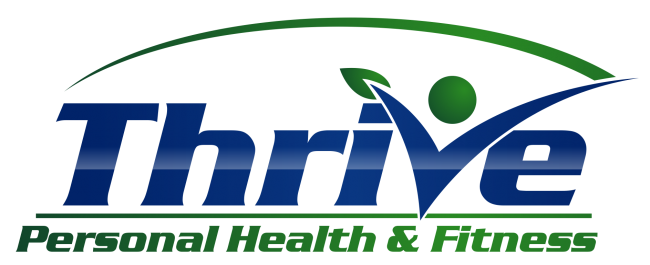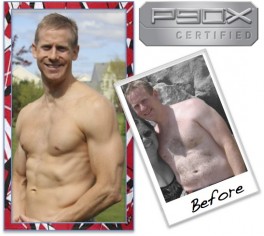P90X2 & Endurance Training
As an aspiring endurance athlete, I jumped for joy when I saw this article. The biggest struggle I have found when talking to many runners or triathletes is they do not cross train. In order to run better, people believe they just need to run more. As I train for this year’s endurance races, I am making X2 a critical component of my training.
Read On and Enjoy…
Click HERE for the source link.
P90X2: A Home Fitness Program Designed For Endurance Athletes
The efficiency of training at home is very appealing, especially for endurance athletes who’d prefer to spend the bulk of their sport’s specific training outside.
Unfortunately, many home training systems have focused more on looking good at the beach than on functional movement. P90X2 changes the trend with a scientific system specifically designed to create better motor function and movement patterns. It can be a great asset for the time-crunched athlete looking for offseason strength gains.
The reason many home fitness programs haven’t been great for endurance athletes is gravity. The programs focus primarily on muscle building because it’s the quickest way to lose weight and change your body composition. But excess muscle can weigh an endurance athlete down, and it’s something to remain conscious of even during sport-specific weight training. While body composition change is also a component of P90X2, this change comes as a by-product of P90X2’s physiological target areas and focus: improvements in strength, speed, balance and mobility.
What is P90X2?
Like P90X, P90X2 is a 90-day video training program led by Tony Horton that’s broken into three distinct phases. However, the phases in P90X2 are much more diverse and specifically targeted than those in the original.
Create Foundation
The first training block is about your base, or more specifically your attachment to the ground. This includes not only your legs but your entire kinetic, or movement, chain. There’s a saying that goes, “You can’t shoot a canon from a canoe.” This means that if your base isn’t solid, you are going to wobble. The goal of phase one is to help you create a solid attachment to the earth so that all other movements are done without compromising your form.
This phase focuses on hip and shoulder stability, a weakness that’s found in a shockingly high percentage every demographic tested, including professional athletes. Weakness in these areas can lead to improper biomechanics. Endurance athletes are especially susceptible as they often do thousands of repetitive movements over the course of one event.
Improve Strength
The next phase of P90X2 is meant to strengthen your foundation, which is where weight-dependent athletes need to be careful. Gaining too much mass too quickly can slow you down. These workouts use instable or athletic positions in order to more seamlessly integrate the strength gains into real world movements.
Some work in this realm can help any endurance athlete improve. The design of P90X2 allows you to tailor this phase to your individual goals, meaning you can keep muscle growth under control while still improving strength.
Engage Explosive Power
Finally, P90X2 focuses on performance. The goal of the final phase is to transfer the strength gains you’ve made into muscular efficiency. While explosiveness isn’t a goal for many endurance athletes, muscular efficiency can enable you to engage higher threshold muscle cell motor units at lower aerobic outputs. If that description draws a blank, you’ll probably understand this; muscular efficiency allows you to save precious glycogen stores for later points in a race, which is often the difference between finisher and medalist.
Use P90X2 Instead of Sports Specific Training
Sports-specific training is vital. You’ll never be good at a sport unless you do it. But many high-level athletes focus much of their training at the gym, which is something weekend warriors should consider as well. Gym training enables you to control force loads without the variables of your sport. This is not only safe and effective, it’s also time efficient. If that gym is in your house, negating all travel issues, the time element is further enhanced.
One of the reasons P90X2 is so evolved from other training systems is due to the relationship with Dr. Marcus Elliott and his P3 training facility in Santa Barbara, California. P3 only trains serious athletes, and with Elliott’s aid, P90X2 was able to incorporate many of what P3 considers to be the more important factors in avoiding injury and altering athlete performance.
For example, the third training phase revolves around something called post-activation potentiation (PAP), which Elliott and his staff have been perfecting for years. Essentially, the P90X2 test group included some of the world’s best athletes who were looking for an extra edge.
How P90X2 Fits into Your Schedule
As an endurance athlete, especially one with a job, family, etc., scheduling is important. While P90X2 is a 90-day program, it’s been created with variables in mind. Specifically, each phase can be extended or shortened to fit your personal schedule. Many people with different goals and schedules can do the program. Thus, you can fit P90X2 into your season no matter what your schedule is like.
That said, the program is intense and for best results should be done in the offseason. As with any training that changes your body composition, the longer you give yourself to integrate sports-specific movement patterns with your new physique, the better.
P90X2 can also be used during the season, especially if don’t mind having a few races with less-than-stellar results. How you abridge the program varies depending on personal schedules and goals, but there are a few things to keep in mind no matter who you are.
First, in order to adapt and benefit from a stage of targeted training, you need a minimum of three weeks. Adding a handful of random workouts into your training is only going to slow you down. If you want to benefit from these workouts, you’ll need a minimum of three weeks and preferably longer. Otherwise you’re better off sticking with your sports-specific schedule.
Second, growing muscles is a process. You will slow down as you start this program, especially in Phase Two. Plan for this as there is absolutely no way around it. In order for muscles to grow, fast-twitch fibers get broken down and, mainly, stay that way until fully adapted. Generally you need about two weeks after a program for your full contingency of fast-twitch muscle fibers to return.
Finally, you need build up to Phase Three. Don’t dive straight into it, no matter how cool it sounds, or it will likely result in having the opposite of its desired effect. As Elliott says, “Once you adapt (to PAP training) you start to feel springy, loose.” But as you adapt you’ll feel broken down and slow. Any attempted racing during this period would be futile. Worse than slow, you’d be at high risk of injury since your body’s state of breakdown will be at around the maximum it can handle.
P90X2 is one of the most exciting training creations for the weekend warrior, a perfect complement to sports-specific training and a great way help you reach the next level in your sport.























